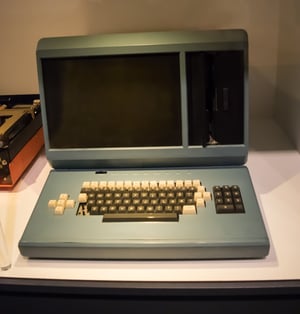Are you considering shifting to a remote workforce? Modern office trends are away from the traditional central headquarters and towards dispersed team. Whether that be telecommuting from home, batches of smaller teams working from coworking spaces, or hiring freelancers around the globe. Many companies and employees tout the virtues of remote teams and work life integration. Remote teams can be an effective approach--this article is not intended to dispute that.
There are benefits of having teams work together in the traditional office too. This article takes a look at the history of working remotely and some of the reasons companies are calling employees back into the office.

Telecommuting, popularly referred to as working remotely, was a concept pioneered by IBM in 1979. Computer terminals were installed in the homes of five of their employees, giving them the ability to work from home. By the early to mid-eighties, IBM had over 2,000 employees working remotely such that they were able to reduce costs by selling some of their buildings.
Other companies jumped on the telecommuting bandwagon not long after IBM instituted this approach to work. They touted the benefits of telecommuting such as reduced overhead, improved employee happiness, and increased productivity, among others. A Gallup poll conducted in 2015 showed that approximately 37% of Americans telecommute.
Last year, however, IBM reversed its remote work policy and recalled all its remote employees back to the office. Other companies have updated their work policies in recent times, requiring that their employees work from the office rather than remotely. Some other notable companies that have reversed their telecommute policy include Yahoo and Aetna.
Innovation
While the companies may have had other reasons for reversing their telecommute policy, one theme that was constant in these companies was the need to remain innovative. Data has shown that working in an office rather than remotely is a major driver of innovation. In the past, employees would say that working remotely offered fewer distractions. Today's digital office tools and good space planning have reversed that, giving employees more time to either have meetings that are actually productive or to focus on critical tasks.
Collaboration
Teamwork--especially among people with different areas of expertise--leads to better business decisions. At a minimum, you need to know where key stakeholders stand. Some companies have specially designed collaborative workspaces where members of a team can work together in generating ideas and innovations.
Communication
There is improved communication among coworkers who work in an office than remotely. Face-to-face communication is enhanced whereby coworkers can share and trade ideas with each other. In-person work allows for hallway conversations (including gossip, for all of its good and bad). It also allows an employee to stop by another's desk to see if they are available for a discussion, versus trying to decide whether to pick up the phone or initiate a Slack chat. Furthermore, non-verbal communication such as body language is enhanced when there is direct interaction among coworkers.
Focus
Workers who telecommute are susceptible to non-work-related distractions which can negatively impact their ability to come up with innovative ideas. While technology allows for remote communication and discussion, virtual meetings are not as effective. This can even lead to resentment when one party has put significant effort into a meeting while another is barely participating.
Organizational culture
Famed business strategist Peter Drucker said, "Culture eats strategy for breakfast." Having the right organizational culture is essential for engaging employees and outperforming the competition. Studies have shown that modern office design is a key component in the development of an innovative organizational culture. Workers in the office benefit from innovative office designs in coming up with fresh ideas; this benefit is lost by workers who telecommute.
Key to Success: Creating a Smart Office
 For most companies, especially startups and small businesses, the ability to innovate is key to being successful. The problem in the past was too much time spent on administrative tasks and manual documentation.
For most companies, especially startups and small businesses, the ability to innovate is key to being successful. The problem in the past was too much time spent on administrative tasks and manual documentation.
Most modern office design is focused on creating areas to facilitate communication and other areas to promote quiet and effective work time. Some offices are even focused on inspiring their employees. There is also a trend towards office automation. There are countless cost-efficient office solutions to keep your biggest asset, your employees, focused on the work they love instead of the mundane.